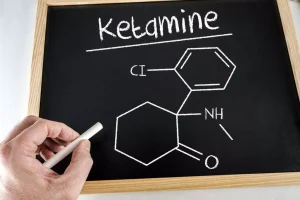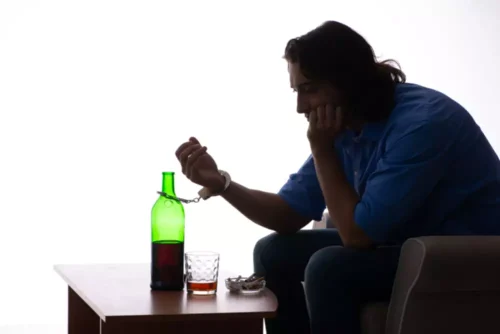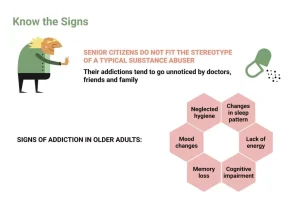
A counselor can advise on ways to cope with the mental and emotional aspects of withdrawal. While these symptoms are more severe than Stage 1, they are not life-threatening. Alcohol was itself used as a detoxifying agent through ‘gradual weaning’ that commanded support in the 18th and early 19th centuries [36]. By the mid-19th century, the Temperance movement strongly influenced the way habitual drunkenness is conceptualized and had widened its focus to condemnation of all alcoholic beverages.
3. Questionnaires to detect severity of AWS
- During alcohol use and the increase in the dopamine levels in CNS contribute to the autonomic hyper arousal and hallucinations.
- Previous studies from von der Goltz et al, showed the involvement of ORX in the regulation of stress, affectivity and addictive behavior.
- ICMR bulletin estimated 62 million alcoholics in India which is as big as that of the population of France [2].
- If your blood pressure, pulse, or body temperature rises, or if you have more serious symptoms like seizures and hallucinations, seek medical care immediately (dial 911).
- Meanwhile, the brain is producing more and more neurotransmitters, making a person further imbalanced.
- It is essential to provide comfort and relaxation for patients presenting for alcohol detoxification.
However, this figure cannot be expected to mirror accurately the wide variation that exists in a large and complex country such as India. The prevalence of current use of alcohol ranged from 7% in the state of Gujarat (officially under Prohibition) to 75% in Arunachal Pradesh. Alcohol use is a pervasive problem that is taking an increasing toll on the world’s population. The World Development Report [1] found that the alcohol related disorders affects 5-10% of the world’s population each year and accounted for 2% of the global burden of disease.
- If you consistently consume significant amounts of alcohol, your CNS gets used to this effect.
- Gabapentin, which has structural similarity to GABA, is shown to be effective in the treatment of alcohol withdrawal [63,64].
- Pretreatment with cytisine (0.5 or 1.5 mg/kg) substantially reduced ethanol intake and preference in both paradigms at 2 hr and 24 hr post-treatment.
- But severe or complicated alcohol withdrawal can result in lengthy hospital stays and even time in the intensive care unit (ICU).
In the First 8 Hours
- Carbamazepine was also reported to be an effective alternative to benzodiazepines in the treatment of alcohol withdrawal syndrome in patients with mild to moderate symptoms [58].
- AUD is the most common substance use disorder in the U.S., affecting 28.8 million adults.
In addition, it is a weak agonist to the α3β2 containing receptors and a partial agonist for the α4β2 receptors. This α4β2 competitive binding by VAR reduces the ability of nicotine to bind and stimulate the mesolimbic dopamine system, like the mode of action of buprenorphine in the treatment of opioid addiction (Elrashidi & Ebbert, 2014). We now focus on the novel medications and their signaling mechanisms by which they exert their effects on AUDs. These novel medications were developed to minimize the alcohol induced side effects and improve the quality of life. These groups of medications include novel as well as FDA-approved medications that are being repurposed for the prevention and treatment of AUDs. In some studies, the combination of these drugs was reported to exhibit potent effects than when they are used alone.
Severe Symptoms
These include many FDA-approved drugs such as anticonvulsants, antipsychotics, antidepressants, and other off-label medications. Some of these drugs have shown beneficial outcomes in various stages of clinical trials. Our current understanding of the alcohol and drug misuse has expanded during the last decade in terms of neural circuitry, behavior, and molecular pathways. However, the same medications in clinical trials had insignificant effects or sometimes even showed toxic effects resulting in organ injury.
Alcohol use disorder

In other terms, these neuroadaptations resulting from continued drug or alcohol use lead to the development of physiological dependence. It’s typical for withdrawal https://ecosoberhouse.com/article/alcohol-and-aging-does-alcohol-make-you-look-older/ symptoms to begin within hours to a day or two after you have your last drink. Symptoms are often at their worst around 24 to 72 hours after you stop drinking.
- Prompt pharmacological treatment is indicated in all cases of AWS, as non-treatment or under treatment can be fatal [25,26].
- Adrenergic medications are of value largely as adjuncts to BZD’s in the management of AWS.
- Others, such as anticonvulsants, barbiturates, adrenergic drugs, and GABA agonists have been tried and have evidence.
- Pretreatment of rats with pregabalin (10 – 30mg/kg, s.c) thirty minutes prior to NTG (10mg/kg, i.p) injection alleviated NTG-induced hyperalgesia and suppressed peripheral calcitonin-gene-related peptide (CGRP) (Di et al., 2015).
Those with severe or complicated symptoms should be referred to the nearest emergency department for inpatient hospitalization. Psychiatric evaluation is strongly recommended to rule out mental health concerns such as suicidal ideation, major depression, and poly-substance abuse. GHB withdrawal can initially be treated with high doses of benzodiazepines; refractory alcoohol is better than drugs cases have responded to pentobarbital, chloral hydrate, and baclofen. The prognosis (outlook) for someone with alcohol withdrawal depends greatly on its severity. You may also receive other medications or treatments for related health issues, like IV fluids for dehydration and electrolyte imbalances or antinausea medicines if you experience vomiting.
The inhibitory effects of alcohol intake are mediated through the hormone ghrelin, oxytocin and opioid receptors, that are expressed in VTA, NAc, hypothalamus and amygdala of the brain. In addition to the FDA-approved drugs, the new medications, that exert their effects through interactions with various receptors, including GABAA, Glycine and nACh receptors, have therapeutic potentials for the treatment of AUDs. Alcohol withdrawal delirium DT is a medical emergency and requires indoor treatment and monitoring.
1. Clinical workflow of diagnosis and therapy of AWS

This made it difficult to advocate ‘gradual weaning’ as a justifiable intervention. A literature search (Medline, Cochrane, EmBase, Psycinfo and DARE) found just two recent reports concerning the use of alcohol for alcohol detoxification [37,38], although there are reports in other medical specialties [39]. By Sarah Bence, OTR/LBence is an occupational therapist with a range of work experience in mental healthcare settings. Behavioral health treatment for alcohol problems is often (but not always) covered by insurance. In the United States, most states have low-cost or free rehabilitation programs for those who are uninsured.
